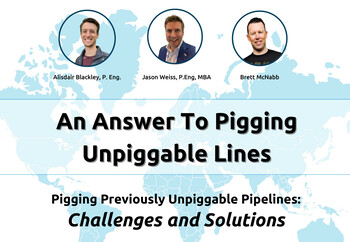
Now available to view is Jason and Brett's presentation on "Pigging Previously Unpiggable Pipelines.
This year, at PPIM Conference & Exhibit 2024, Jason Weiss of Argus and Brett McNabb of Apache Pipeline Products discussed the challenges and solutions for maintaining previously considered "unpiggable" pipelines. The presentation provides a wealth of knowledge beneficial to any integrity engineer or facility operator struggling to run pipeline maintenance programs with complex line geometry or conditions.
So, what exactly does the presentation cover?
The presentation highlights critical insights from a recently published paper, "Pigging Previously Unpiggable Pipelines: Challenges & Solutions." Written by the previously mentioned presenters and Argus' Alisdair Blackley, Pigging Previously Unpiggable Pipelines: Challenges & Solutions" defines what makes a pipeline "unpiggable" and the common reasons for this classification. The paper then explores some challenges associated with pigging these lines and concludes with innovative solutions to overcome these difficulties.
The presentation begins with Jason Weiss explaining the motivation behind the paper and subsequent talk.
The Motivation Behind the Paper
Jason explains that the motivation for writing on the subject is that there has been a noticeable drop in focus on the unpiggable pipelines. With much of the limelight centering on ILI advancements, subjects on why and how you can/should PIG a pipeline are becoming less and less spoken of. Consequently, Jason and Brett both began to notice that they had to educate people on why pigging programs are essential for pipelines. Jason makes an interesting note in the presentation, commenting, "…as tribal knowledge fading away." It seems he is expressing that industry knowledge, assumed to be common, may no longer be. As such, they produced the paper as an opportunity to share some of their expertise and support the continued sharing of information on this vital subject.
"We notice we are spending more and more time educating people on reasons to PIG a pipeline… As an industry, as that tribal knowledge fades away, we thought we would take our time here today to share some of our experiences and knowledge."
-Jason Weiss
After expressing the motivation behind the paper, Jason then explains why PIG a pipeline.
Why PIG a Pipeline?
Jason provides a review of the importance of pigging. He explains the operation benefits and safety insurances pigging provides. He also highlights the collection of data pipeline pigging offers and the regulatory compliance requirements.
"From an operation standpoint, pigging can help with production optimization, corrosion mitigation, emissions reduction, and many other benefits.”
-Jason Weiss
With an understanding of the essentialness of Pigging, Jason explains the reasons that often lead to pipelines being deemed "unpiggable."
What makes a Pipeline Unpiggable?
Jason explains the unpiggable causes that he and Brett will review in the presentation. The causes fall into two categories: existing line geometry and operational considerations. Brett begins with an explanation of the geometry considerations that impact piggability.
He explains how different design elements, including wall thickness, dual-diameter, and a combination of varying pipeline materials, bends, and more, all impact whether a PIG can traverse a line. Jason supports Brett's points by explaining the challenges to pig in existing infrastructure. He highlights that many aging pipelines were not constructed with pigging in mind, leading to problems such as no launcher or receiver stations and unknown line geometry.
"Various piping connections including inlets and outlets can also lead to geometry that can cause a pig to be stalled or stuck, creating an unpiggable pipeline."
-Brett McNabb
Difficulties with Traditional Launcher/Receiver Stations
Traditionally, PIGs have been launched and received through barrel trap stations. Jason looks at the traditional method and some of the difficulties it can cause operators when using the infrastructure to pig their pipelines. He explains how 1) the station's footprint can be too large to implement on lines not made to provide the necessary space, 2) the high upfront costs to introduce the station, 3) the high operational costs to run the infrastructure, 4) the safety concerns of operating a launcher/receiver trap, and 5) the excessive venting and pollutants generated from the trap station. He goes on to explain the latter point in more depth.
"…As seen, these infrastructure systems required a sizable consideration. It's not only the space required to retrofit the line, but the upfront costs can be significant. Other considerations such as ease of operation, safety, site accessibility, and environmental impact are all required."
-Jason Weiss
Environmental Difficulties
Jason points out that venting and flaring create high GHG emissions and limit the locations where you can pig. Venting and flaring are not acceptable in urban environments. As such, pipeline pigging becomes an issue if the line is near populous centers and farmhouses. With environmental considerations becoming increasingly prominent as a critical factor of importance for end-use while environmental regulations increase in stringency, the environmental challenges that pigging can pose create significant hurdles to introducing the operation. Later in his presentation, there is a note the EPA recommends reducing emissions using a Pig Valve.
"Even with the existing pigging infrastructure in place, other considerations surrounding the environment and safety must be planned for. In some instances, these considerations alone can prevent pigging even on a piggable line.”
-Jason Weiss
Location
After explaining the environmental challenges facing line piggability, Jason describes how location can prevent lines from being pigged that would otherwise be more than possible to PIG. He illustrates how the costs associated with remote operations and operations that require high-frequency operations can make a pigging operation infeasible. He also notes that simple access can also be a difficulty in pigging. Jason provides an example of an Albertan pipeline that does not have road access or when road access is seasonally unavailable. The solution was to use a costly helicopter to get the operator to the site, which required pigging every second day.
"In the remoteness of well sites and infrastructure make piggable line, Unpiggable... In the wintertime in northern Alberta, road access to launch a pig is not in question. But In the summertime, the only access to well sites is by helicopter."
-Jason Weiss
Solutions: PIG Designs
The presentation moves forward with Brett explaining solutions for pigging "unpiggable" lines, beginning with the PIG. Brett explains that customization through PIG length, disks, seals and thickness, and brushes can support the pigging operation of pipelines with changing diameters, bends, unbarred tees, wyes and laterals.
"Many different PIG designs through customization can be done as a PIG manufacturer to combat the challenges in unpiggable pipelines."
-Brett McNabb
Solutions: Operational
Following Brett, Jason explains operational solutions to the challenges presented. He provides the Pig Valve as an alternative to the barrel trap. He describes the emission reduction, small footprint, simplicity and improved safety of a Pig Valve over a barrel trap.
"As environment sustainability prominence gains, emission reduction becomes critical in pigging operations."
-Jason Weiss
Jason then explains an operational solution for high-frequency and remote pigging using an Automatic Multi-Pig launcher or a Multiple Sphere Pig Launcher. Both allow remote sending and receiving of pigs, condensing human intervention while dramatically reducing emissions. He notes that the Automatic Multi-Pig Launcher allows for sending bullet-style pigs for enhanced cleaning capabilities.
Conclusion
Overall, the presentation is immensely informative on the subject of pipeline pigging: its challenges and the solutions available. A subject noted by the presenters is sometimes overlooked or taken for granted as common knowledge for long-time experts in the field. Of course, as generations change, it is important to share the information with the new generation so they can have the tools to face the challenges presented.
The presentation is a must-watch for any end-users or pipeline operators who are searching for ways to improve how they maintain their pipelines. The paper will soon be available on the Argus website if you are interested in the subject further.
Click here to watch the video on our YouTube channel.
Nicolaas Ainsworth


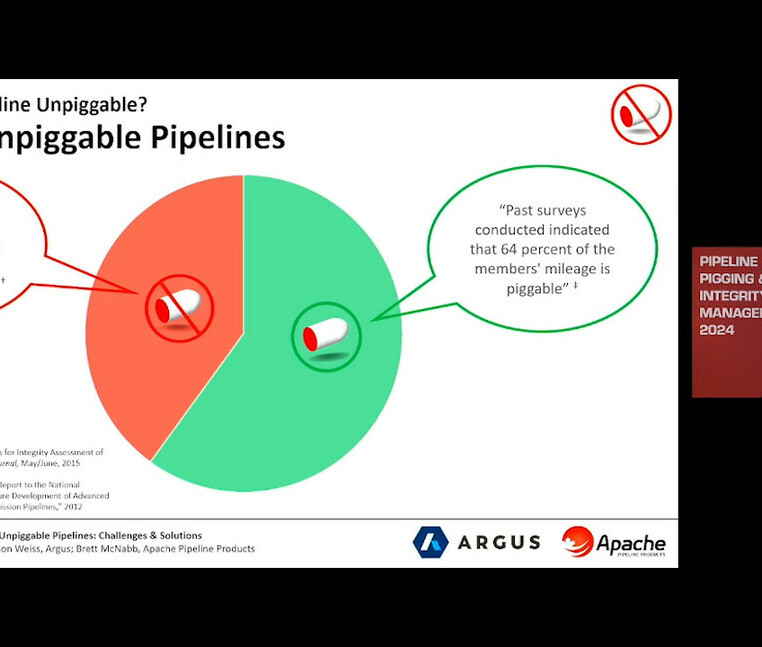
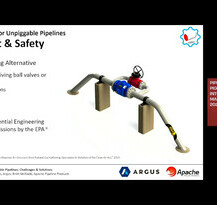
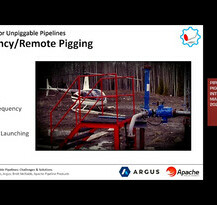
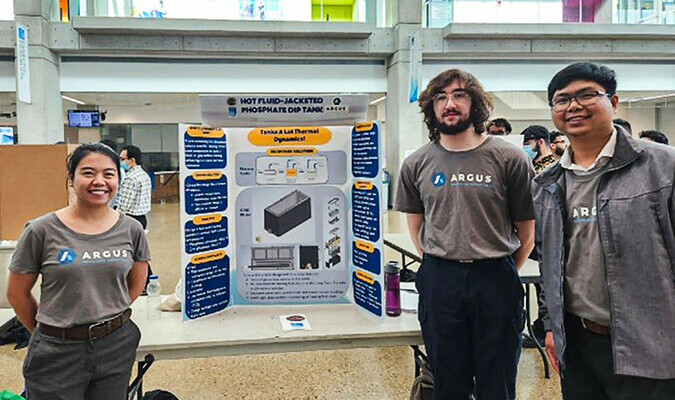
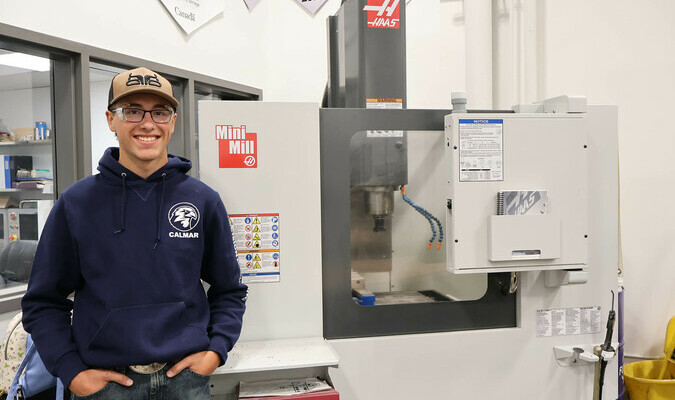

Leave A Comment